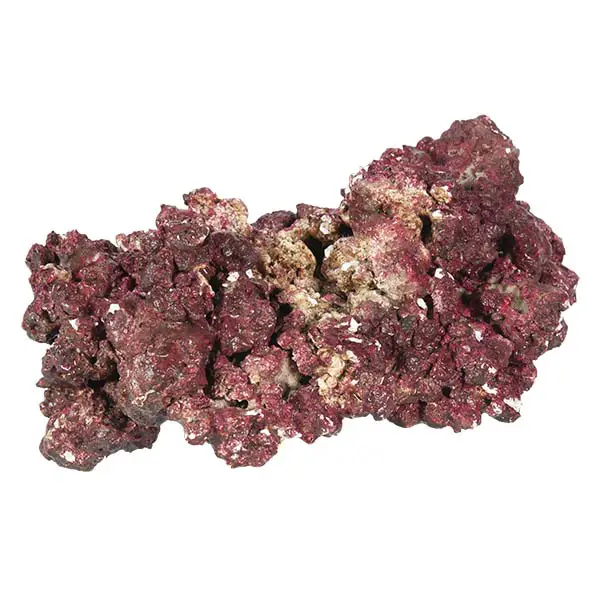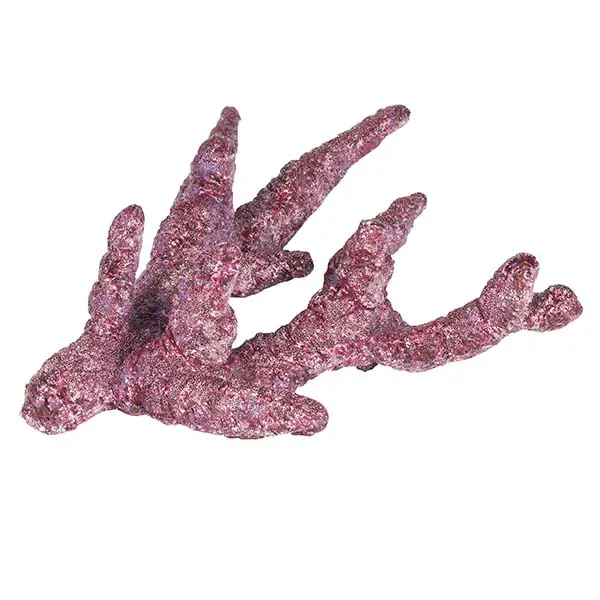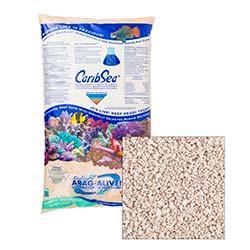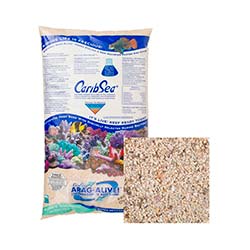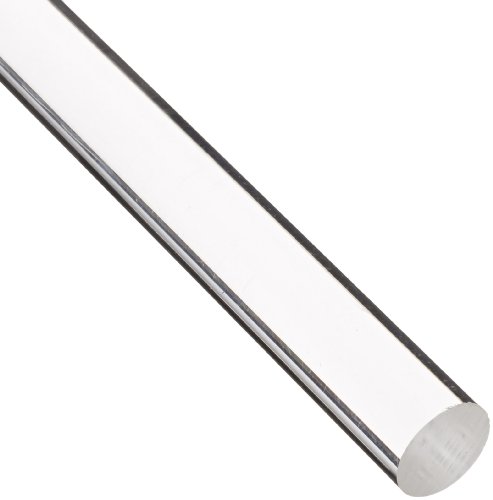When starting a new saltwater tank there are many factors to consider, among them, whether or not a bare bottom setup is right for the aquarist’s needs. What are the benefits of a bare bottom tank? What are the risk factors?
Like many aquarists, the decision to choose a look for their tank can be hard. When deciding between a bare bottom and a sand bed, there are a few factors to consider.
Bare bottom tanks have several pros and cons.
What is a Bare Bottom Tank?
A bare bottom saltwater tank is an aquatic setup that lacks any form of the substrate on the bottom of the tank. This setup provides a pristine appearance that emphasizes the aquarium rock and marine life. While the argument of whether the bare glass, sand, or gravel is more visually appealing depends on the individual aquarist, there are numerous pros and cons to having a bare bottom aquarium.
Pros of Bare Bottom Tanks
While the main argument is that a bare bottom aquarium is easier to maintain, there are many other benefits that this style of saltwater reef tank has to offer.
Easy to Maintain
A bare bottom aquarium is easy to siphon and clean because the lack of sand prevents fish waste and other detritus from settling into the sand or gravel. The lack of sand can also make it easier to clean around the rocks because the fish waste won’t build up under the structure. Instead, the excess fish matter is more likely to be filtered out mechanically because well-placed blowers keep it suspended in the water. Additionally, there is no need to siphon through sand and create an enormous mess when it’s time to scrub the tank.
Waste Control
Substrates trap waste that should be cycled through the water and filter. When the waste cannot be filtered out and begins to decompose, aquarists run the risk of increased production of nitrates, phosphates, and ammonia. In higher levels, ammonia can be deadly to aquarium fish, and phosphates and nitrates can slow or prevent growth and color in corals. When there is no sand or gravel to trap waste, it is less likely that these byproducts will harm fish and corals.
Further, the excess detritus remains suspended in the water and has a better chance of being filtered out of the water.
No Sandstorms
Without sand on the bottom of the tank, aquarists can aim powerheads and blowers anywhere without the worry of blowing sand, gravel, or detritus around the water. This setup allows for clear water with little effort. With this type of tank, aquarists can increase their water flow without having sand storms blow around the tank.
If housing SPS (small polyp stony) is something of interest, a bare bottom may be the way to go because SPS typically prefer tanks with a higher flow rate. Some corals, too, prefer a higher flow rate.
No Unwanted Bacteria or Parasites
Tanks with a bare bottom are less likely to have unwanted guests in the tank, such as bristle worms, flatworms, and cyanobacteria. All of these critters reproduce within the sand or gravel and can be a hassle to remove. With a bare bottom, aquarists can breathe easy knowing their tank is safer from pests.
Lowers the Cost
Because there is no sand or gravel on the bottom, aquarists save money because there is no need to buy expensive sand and gravel. The price of sand at major pet stores can be anywhere from 15 to 50 dollars per bag (depending on the size, type, and brand of the substrate). For the aquarist on a budget, a tank with a bare bottom may be the way to go.
Cons of a Bare Bottom Tank
While there are many benefits to having a bare bottom aquarium, there are some cons that should be considered.
No Substrate
The con itself is in the name: bare bottom. Some aquarists say that the sand bed tanks add a natural layer of sand that mimics wild aquatic environments. That being said, there are some critters that you will not be able to house without sand, gravel, or another form of substrate. Any aquarium fish (such as gobies, sea stars, and red goatfish) that move or burrow in the sand may have to be removed or saved for a future tank.
Fewer Beneficial Bacteria
With no sand or gravel, beneficial bacteria for biological filtration may not be present. As a result, aquarists who have no sand or gravel must rely on other ways to remove detritus, like siphoning or skimming debris off the top of the tank.
However, live rock can introduce the same beneficial bacteria as a deep sand layer. For this reason, adding live rock to a bare bottom can nearly resolve the issue of helpful bacteria.
Risk of Sliding Rock
Balancing rocks to achieve that perfectly aesthetically pleasing rock structure is no simple feat. Even after careful placement, there is still the risk of a rock falling or sliding. Unlike sand or gravel, a bare bottom aquarium has no protective bottom layer. So, if a rock slides down or falls over in the tank, there is a chance that the bottom of the tank could crack.
Further, it may be more difficult to place stable rock formations with no sand or gravel surrounding the bottom. Without sand or gravel to hold rocks in place, they may be more prone to slipping.
How to Choose Between a Bare Bottom and Sand Bed
When it comes down to it, the decision between a bare bottom and sand bed is a personal choice. Even though aesthetics is the driving factor for many aquarists, there are some factors that should be considered before committing to one tank style or the other.
Sand Bed vs. Deep Sand Bed
The main difference between a sand bed and a deep sand bed is, you guessed it, the depth of the sand. Generally, a sand bed will be between 1 and 2 inches deep, and a deep sand bed will be around 3 t0 5 inches deep.
Benefits of Sand Beds
While some may simply like the look, there are some benefits of having a sand bed in saltwater tanks.
Beneficial Bacteria
While regular sand beds serve as a cushion for rock and other aquarium decorations, it also has what some consider to be a more “natural” look. Deep sand beds, on the other hand, also serve a biological purpose. These beds house anaerobic bacteria that break down nitrates and absorb ammonia, phosphates, and dead fish, and invertebrate matter.
Natural Food Source
With the help of a sand cleaning crew (bristle worms, snails, sea cucumbers, and more), a sand bottom can generate food for filter-feeding corals and SPS. The sifting crew produces eggs and larvae that are happily consumed by saltwater invertebrates, and thus effortlessly provide those essential nutrients.
Buffer from Rock Slides
Should the unthinkable happen and your rocks slide off from their position, having a sand bed can protect your tank from cracking. The sand acts as a buffer, and as a result, your tank (hopefully) will not suffer any damage.
Cons of Sand Beds: Hydrogen Sulfide
Besides the cleaning aspect, the one notable risk of having a sand bed is the potential for producing harmful substances, such as hydrogen sulfide. While the beneficial bacteria produce harmless chemical, nitrogen, from the excess nitrate, harmful anaerobic bacteria produce hydrogen sulfide. This chemical can be deadly to the fish, coral, and other saltwater inhabitants. The production of hydrogen sulfide typically happens at the very bottom of the tank.
However, there is quite a debate on whether hydrogen sulfide will truly cause such detrimental effects. Leading experts in the field, such as Dr. Ron Shimek, claim that poisonous bacterial production will not leak out of the depths and poison the tank.
Others claim that a well-established cleaning crew of bottom-dwelling fish and invertebrates will sift through the sand just fine. Still, others maintain that aquarium owners can do the sifting themselves. Regardless, there are ways to avoid the poisonous gases that can be produced from deep sand beds.
Maxspect Gyre 330 Powerhead
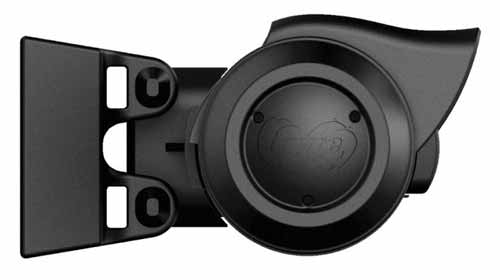
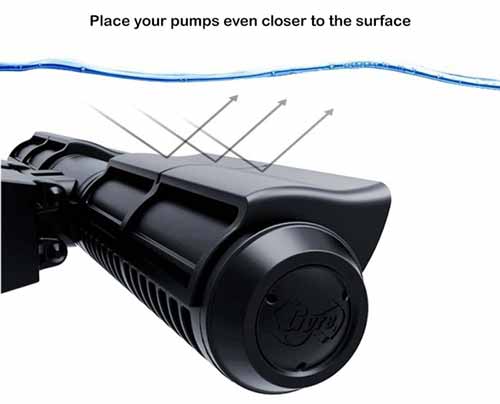
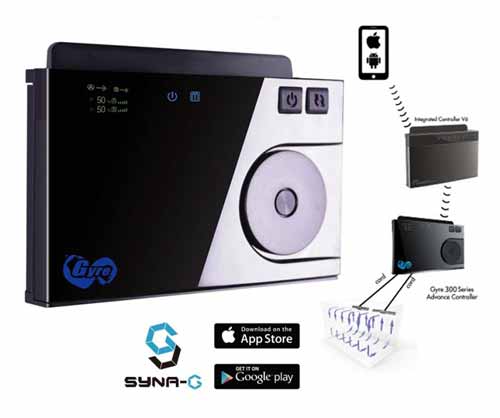
Water flow is important for your aquarium. Your return pump will create some flow but often it’s not enough. An additional pump called a powerhead is usually added to improve water flow. The Maxspect Gyre is unique among powerheads. It is unusually compact as well as powerful. Powerheads in your tank distract from the beauty of the inhabitants. An unobtrusive yet powerful powerhead like the Gyre makes it very desirable.
How to Make the Decision Between a Bare Bottom and Sand Bed
When making the final decision between a bare bottom and sand bed, all the above considerations should be taken into account. Each pro and con will weigh differently depending on the individual aquarist. If the look of a sand bed is desired, then there are ways to avoid the potentially deadly effects of hydrogen sulfide. On the other hand, if easier upkeep and a better environment for saltwater invertebrates is the route you want, then a bare bottom may be right for you.
